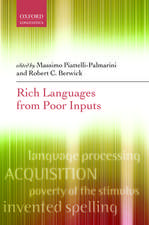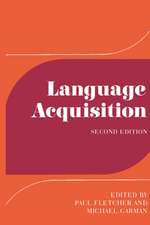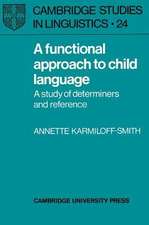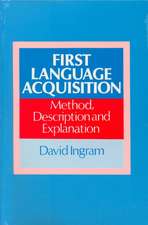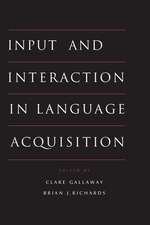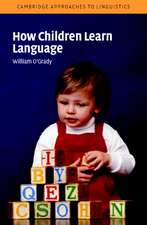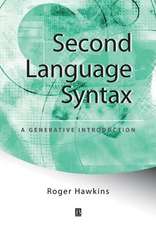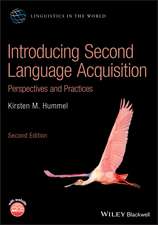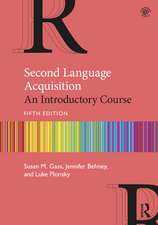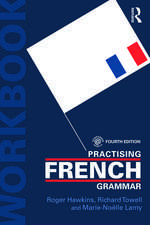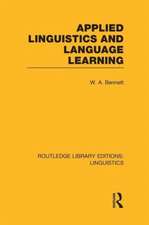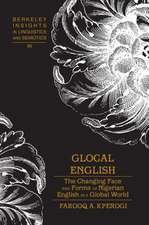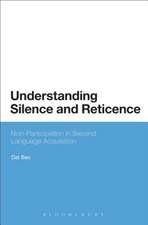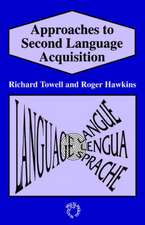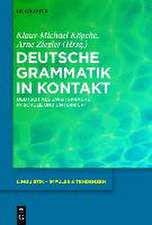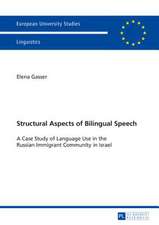How Second Languages are Learned: An Introduction
Autor Roger Hawkinsen Limba Engleză Hardback – 21 noi 2018
| Toate formatele și edițiile | Preț | Express |
|---|---|---|
| Paperback (1) | 202.82 lei 22-36 zile | +25.29 lei 6-12 zile |
| Cambridge University Press – 21 noi 2018 | 202.82 lei 22-36 zile | +25.29 lei 6-12 zile |
| Hardback (1) | 498.74 lei 22-36 zile | |
| Cambridge University Press – 21 noi 2018 | 498.74 lei 22-36 zile |
Preț: 498.74 lei
Preț vechi: 560.39 lei
-11% Nou
Puncte Express: 748
Preț estimativ în valută:
95.43€ • 99.91$ • 78.97£
95.43€ • 99.91$ • 78.97£
Carte disponibilă
Livrare economică 17-31 martie
Preluare comenzi: 021 569.72.76
Specificații
ISBN-13: 9781108475037
ISBN-10: 1108475035
Pagini: 346
Ilustrații: 8 b/w illus.
Dimensiuni: 177 x 253 x 20 mm
Greutate: 0.82 kg
Editura: Cambridge University Press
Colecția Cambridge University Press
Locul publicării:Cambridge, United Kingdom
ISBN-10: 1108475035
Pagini: 346
Ilustrații: 8 b/w illus.
Dimensiuni: 177 x 253 x 20 mm
Greutate: 0.82 kg
Editura: Cambridge University Press
Colecția Cambridge University Press
Locul publicării:Cambridge, United Kingdom
Cuprins
List of figures; List of tables; Preface; Acknowledgements; 1. Second language learning: the nature of the task; 2. How words and their parts are learned; 3. Exploring the L2 learning of English verb forms; 4. How sentence structure is learned; 5. Second language learning and universal grammar; 6. How phrasal and sentential meaning are learned; 7. How sound systems are learned; 8. Real-time and contextual use of language by second language speakers; 9. The role of input in second language learning; 10. The effect of starting age on learning second languages; 11. Pulling the threads together – a theory of how second languages are learned?; Glossary; References; Index.
Recenzii
'This book provides a very clear and accessible introduction to second language acquisition viewed from a linguistic perspective. Readers will come away with an excellent grasp of the central issues that have dominated the field, including the task facing learners and the linguistic properties that must be acquired. The effects of age, input, and the mother tongue are carefully assessed, as well as theories and debates about the nature of second language acquisition. Highly recommended as an introductory textbook for non-specialists and would-be specialists alike.' Lydia White, McGill University, Montreal
Notă biografică
Descriere
A comprehensive introduction to second language learning for newcomers to the field, with frequent summaries and supporting activities.

